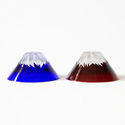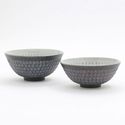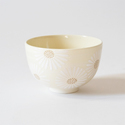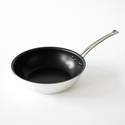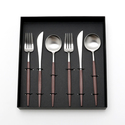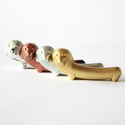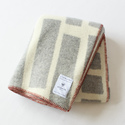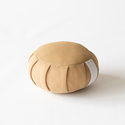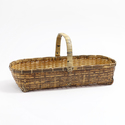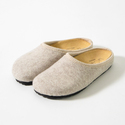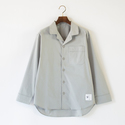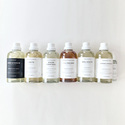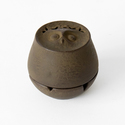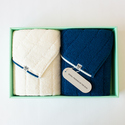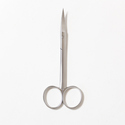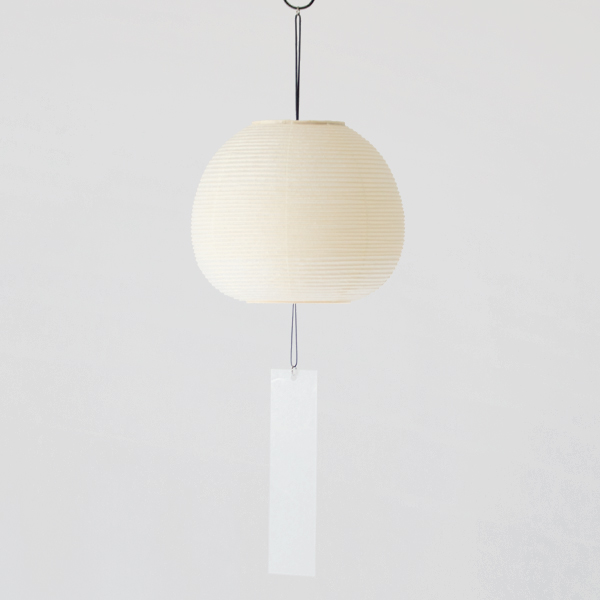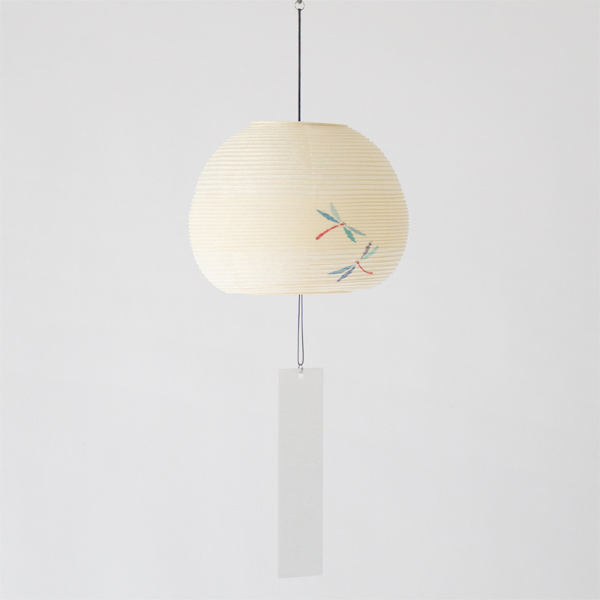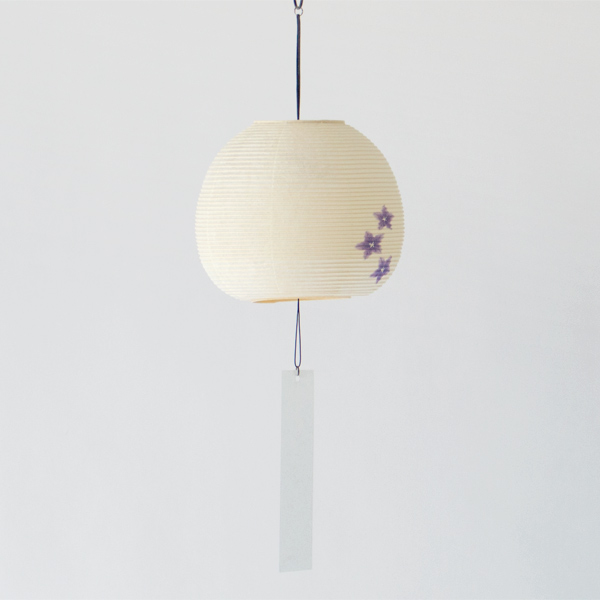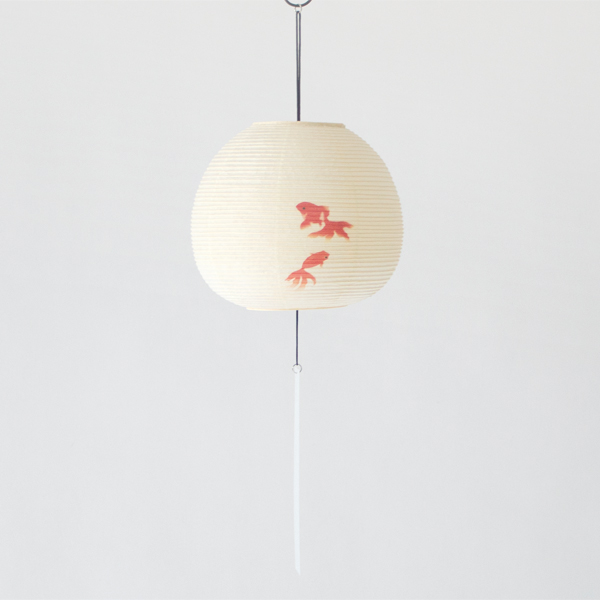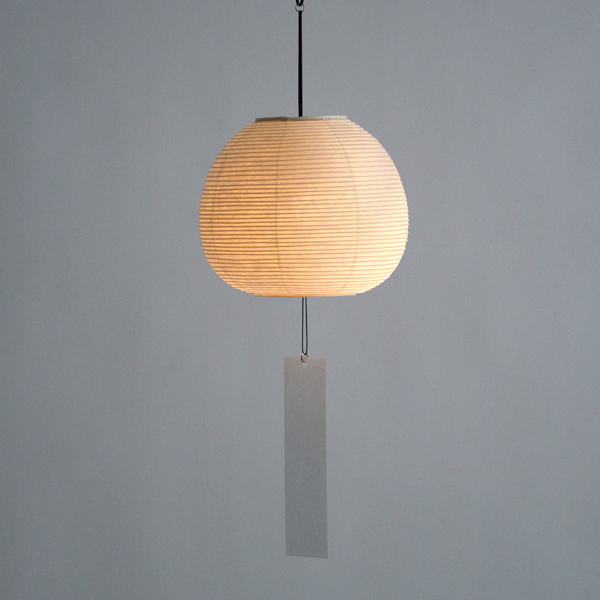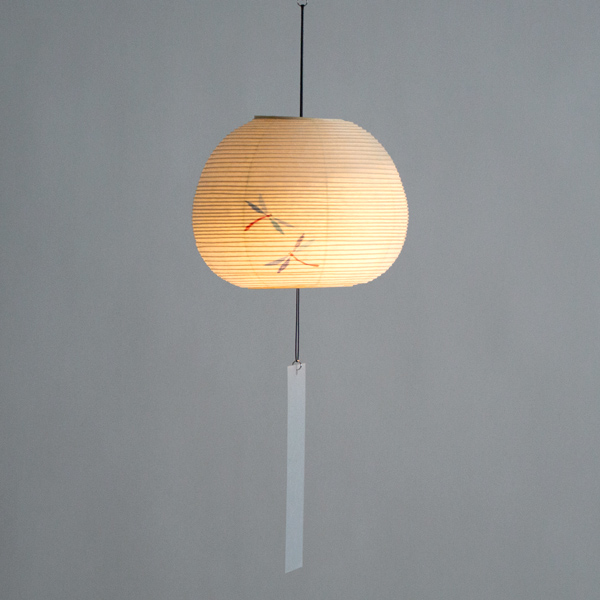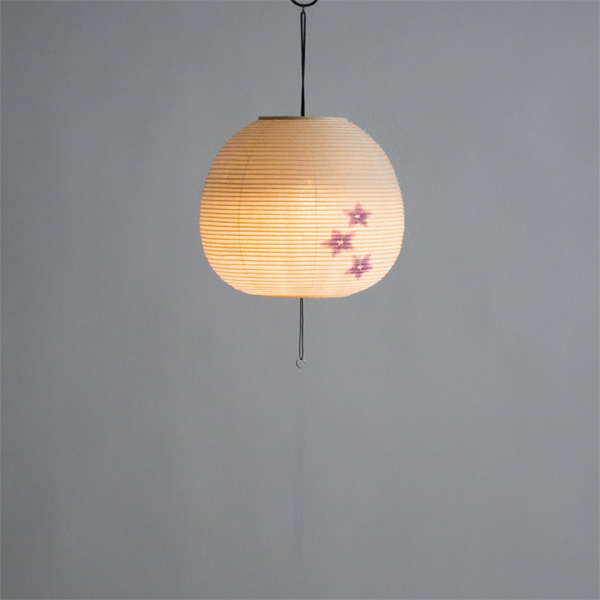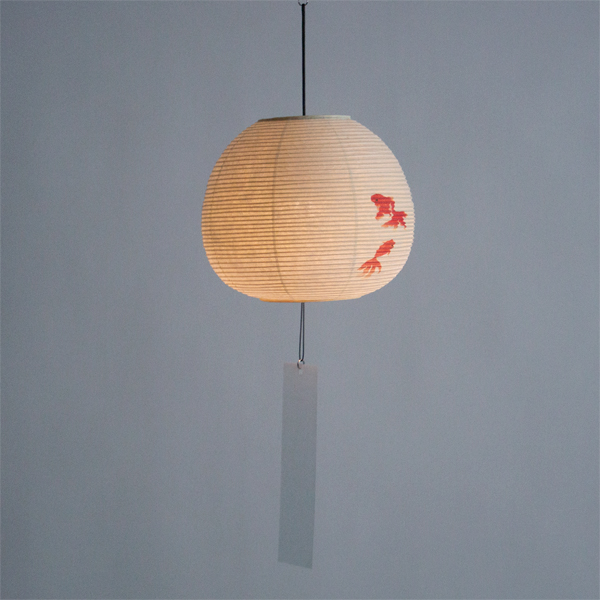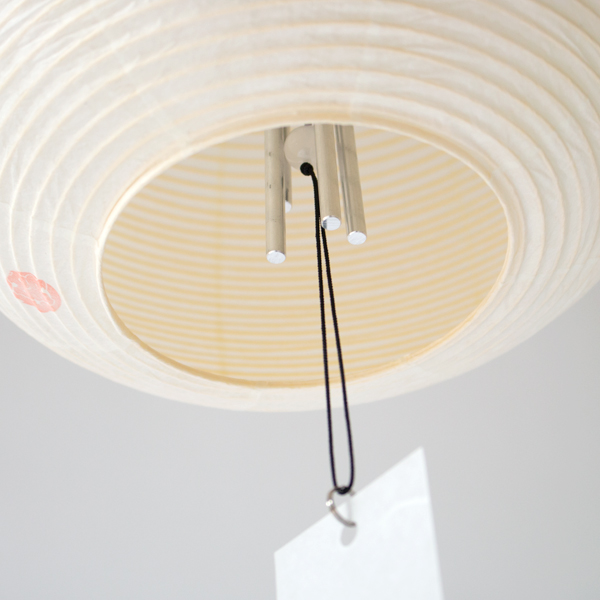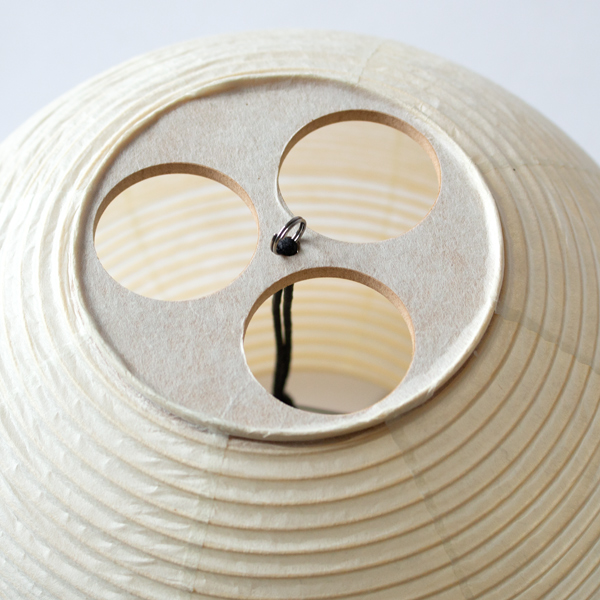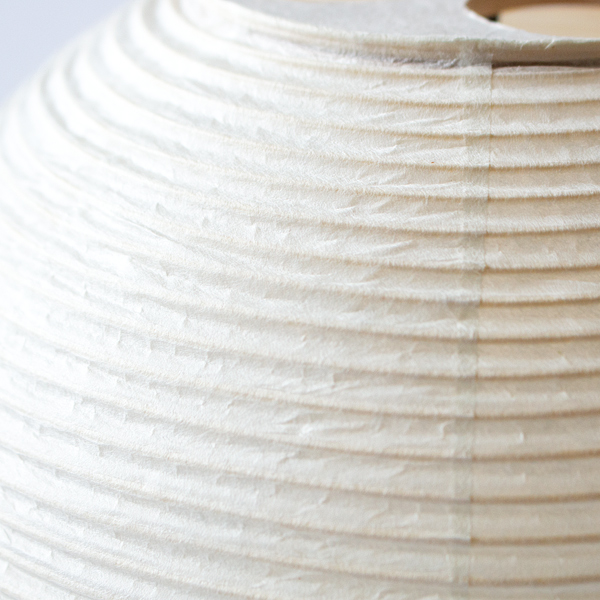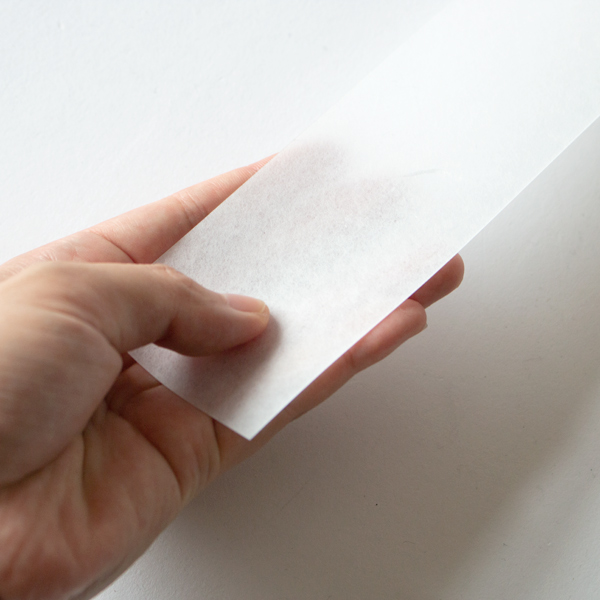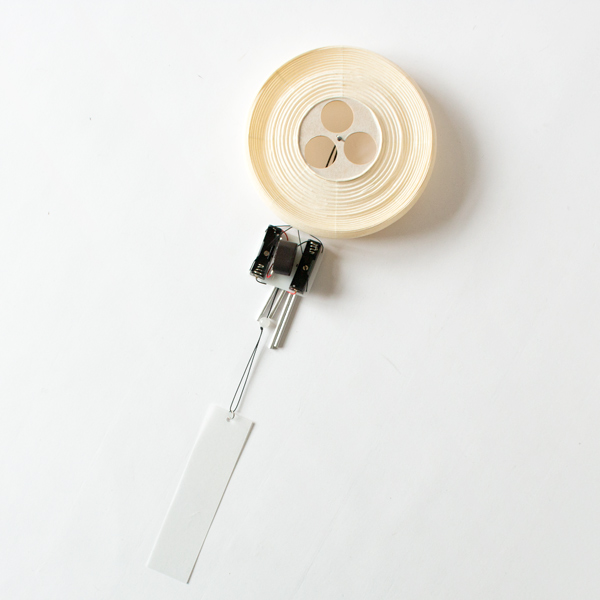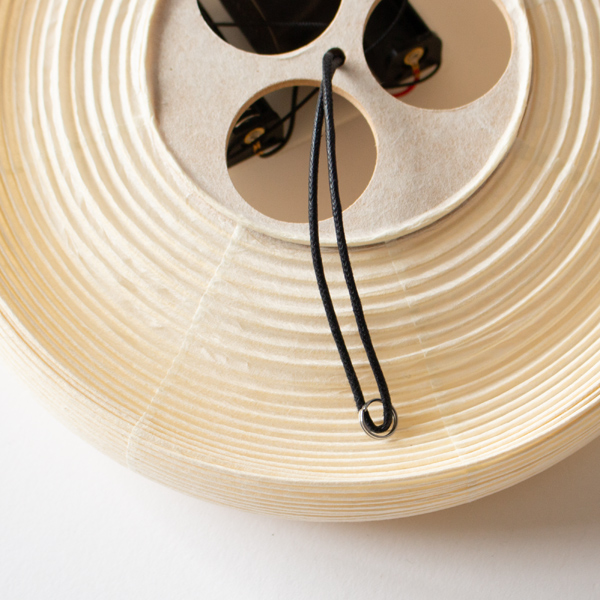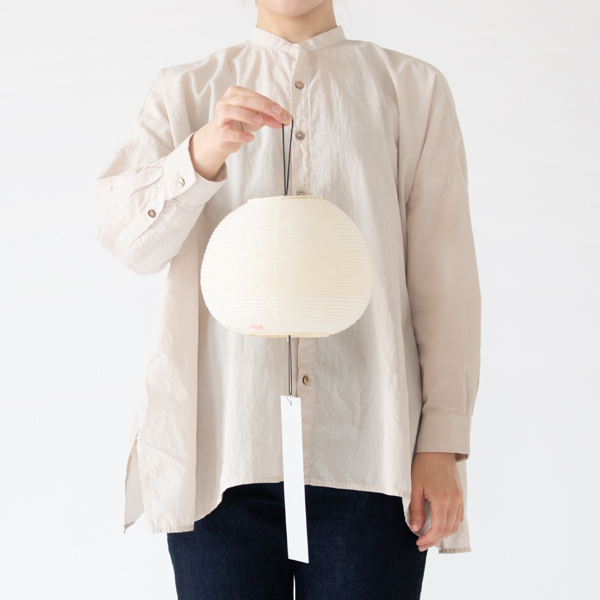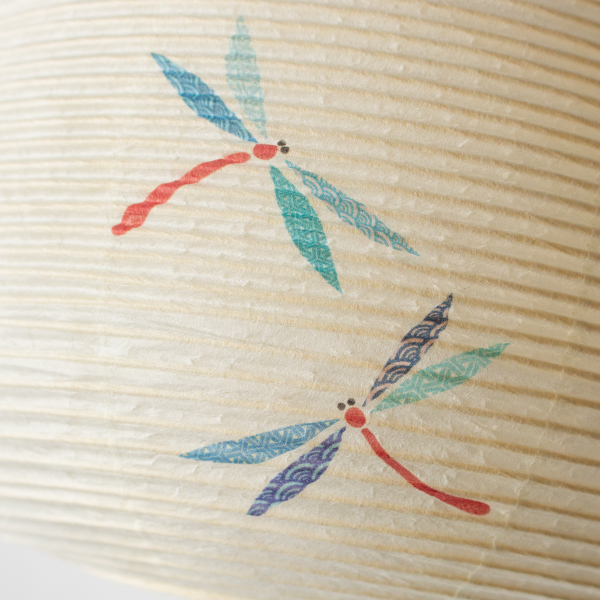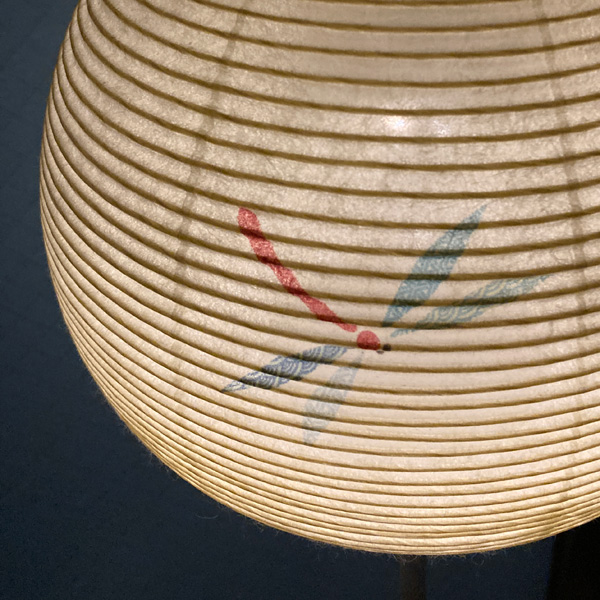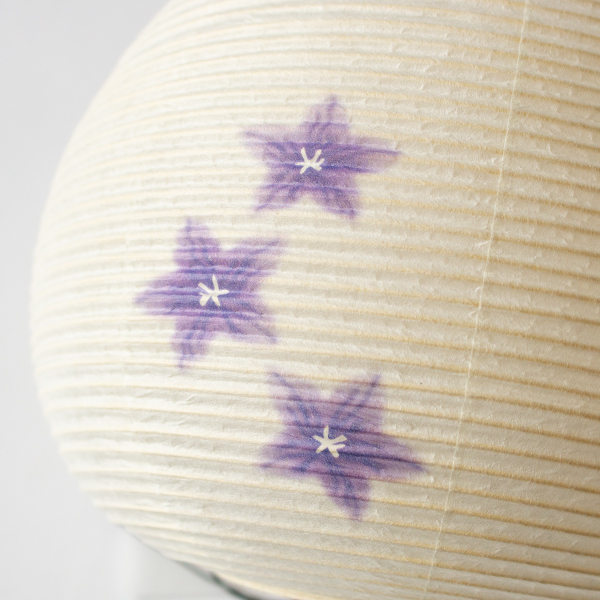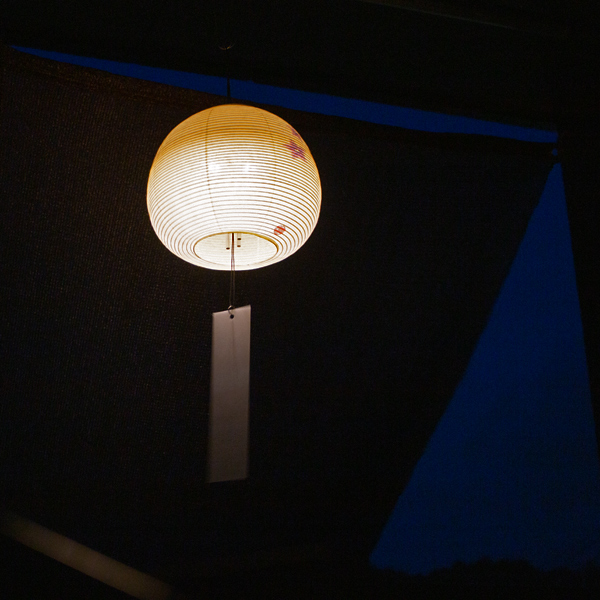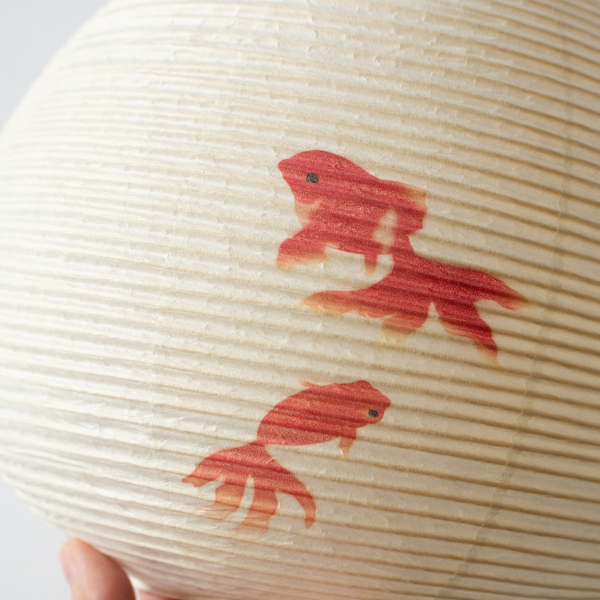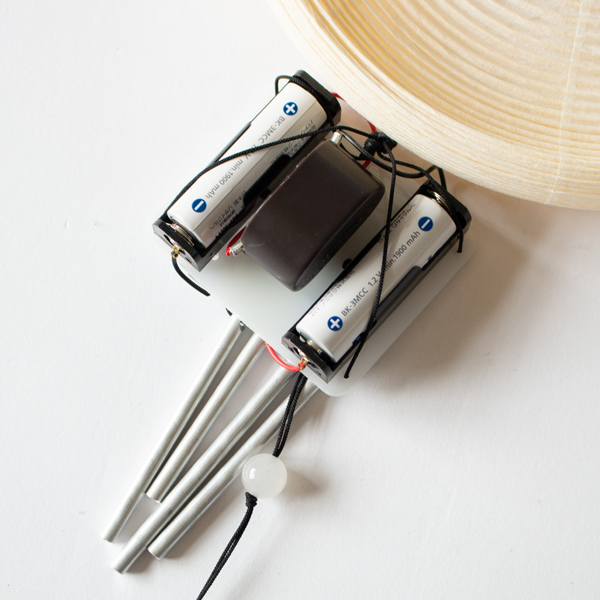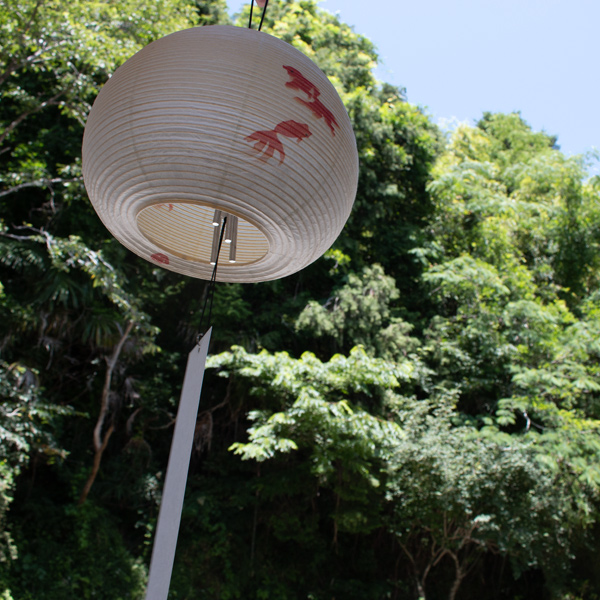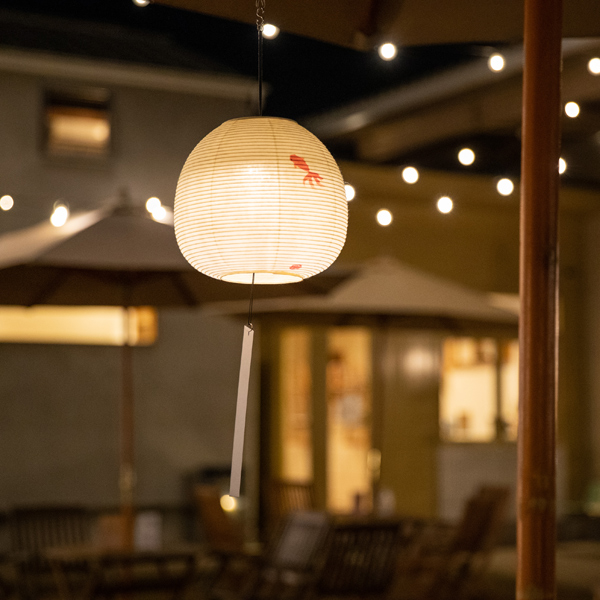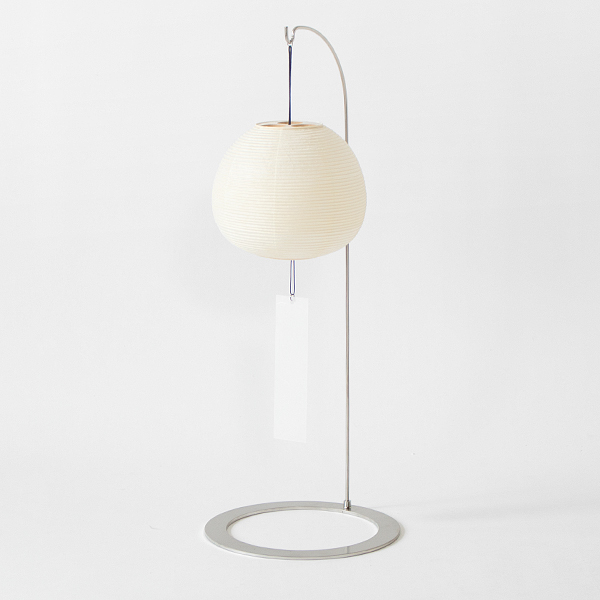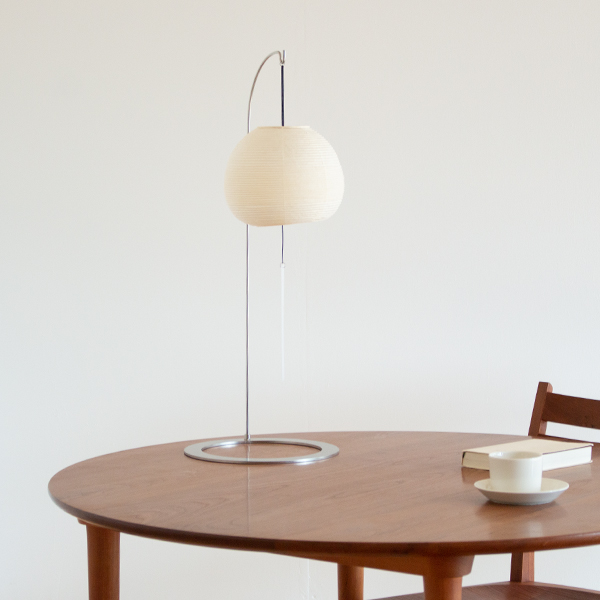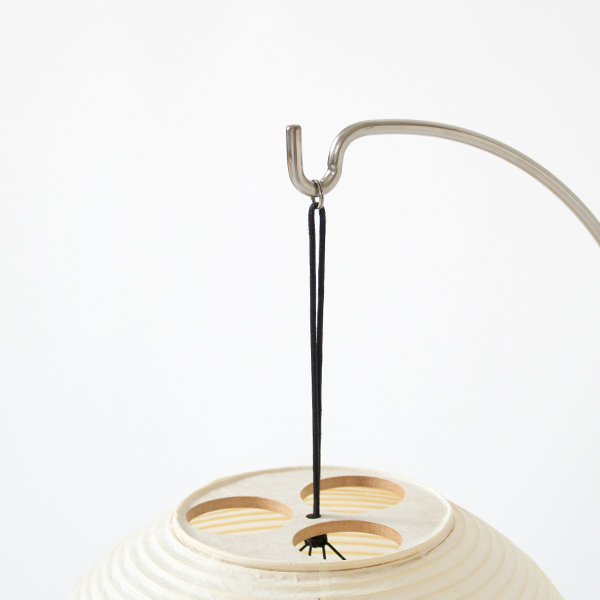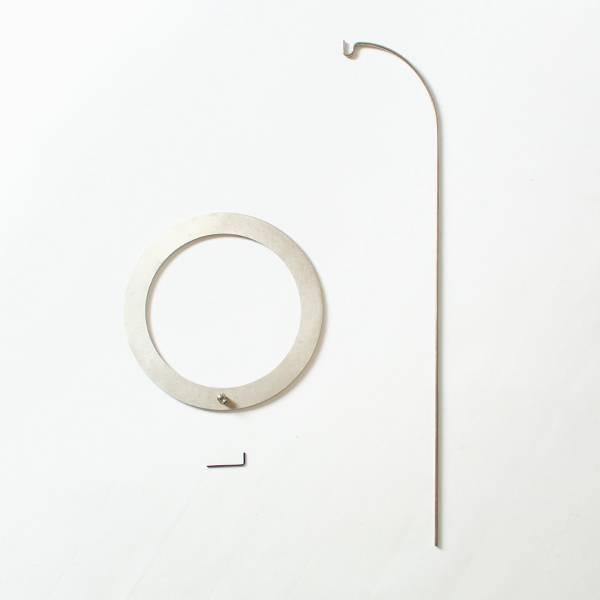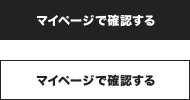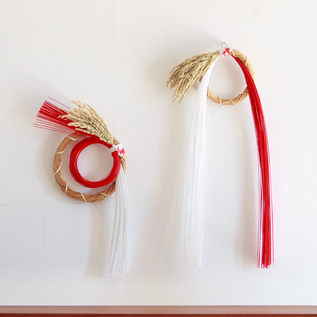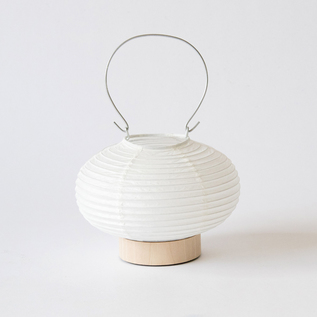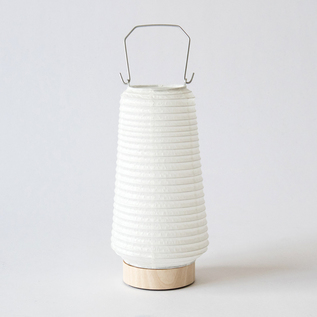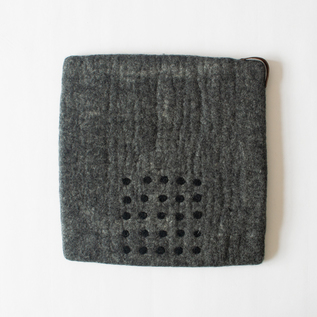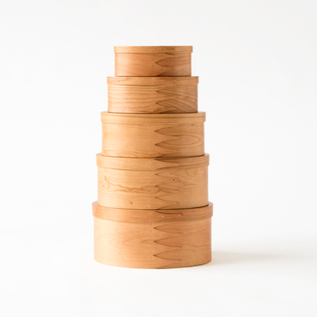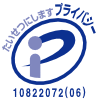- トップページ/
- Japanese products/
- Home essentials/
- WIND CHIME LANTERN EN
WIND CHIME LANTERN EN
風が吹いて感じる、日本の夏
Even in summer, when the days are hot and languid, the nights are somewhat more comfortable, and it is pleasant to open the windows and let the night breeze in to relieve your air-conditioned body. Wind chimes, a summer tradition, make the relaxing time of feeling nature, even if only for a short while, special. For just such a moment, put down your smart phone and concentrate on quieting your mind while listening to the beautiful sound of the wind chimes. Suzuki Mohei Shoten's wind-bell lanterns are, as the name suggests, a combination of a wind-bell and a Japanese chochin (lantern), a gem that can be enjoyed both by the eyes and ears.
Feel the Japanese summer breeze blowing.
The Fu-ring Chochin "EN" is an interior item that combines the sound of a wind bell and the soft light of a chochin. Wind chimes are often made of glass or brass for the round part, but this chochin is made of Japanese paper, washi. Even though it is made of paper, it has a water-repellent finish, so there is no need to be too nervous about it, as it will not tear or deteriorate even if it is hung on a balcony or at an entrance and receives some rain.
Inside the lantern is a wind chime made of aluminum , which produces a high, clear tone that echoes beautifully every time the wind blows. The metal chimes have a longer-lasting tone than glass chimes, so you can relax and listen to the sound without feeling busy.
When you pull the swinging strip of paper, it makes a "click" sound like an electric switch cord, and the lantern glows faintly. The light flickers in the wind, just like the light of a candle. The flickering effect provides further healing, so you can sit on the sofa and gaze at the wind chime lanterns in the window and enjoy the time both with your eyes and your ears.
There are a total of four types of chochin designs. There are plain ones that allow you to enjoy the rustic atmosphere of Japanese paper, and three types of summer-inspired designs: goldfish, bellflower, and dragonfly. These patterns, which have been applied to kimono and other Japanese fabrics since ancient times, have meanings.
Goldfish: The red goldfish is a symbol of abundance that brings happiness.
Kikyo: The Chinese character for "bellflower" is a symbol of good luck and good fortune.
Dragonfly: Dragonflies can only move forward and cannot retreat, so this pattern is associated with good luck as a "winning insect" that brings victory.
In addition to the lovely appearance, knowing the meaning of each pattern makes the choice even more enjoyable.
A traditional item, but easy to use in a modern style
It is powered by two AA batteries (sold separately). Since it is not an outlet type, it can be hung anywhere you like, such as on a balcony, and the cord does not get in the way. Outdoor enthusiasts can use it as an unmistakable landmark to show the location of their tent at the camp site. There is no need to worry about voltage or the shape of the outlet, so there is no need to worry about anything else if you are giving it as a gift to someone living overseas.
In addition, there may be cases where there is no place to hang chochin even if you want to hang them in a rented house. For such people, you can use a special stand for wind-bell lanterns. You can place it beside your bed like a reading lamp or in the hallway to illuminate your feet at night. Because wind-bell chochin are portable and convenient, the number of places where they can be used together with a stand increases rapidly.
We are particular about the functionality of the chochin. They can be spread out to illuminate and folded for storage. The "folding culture," born from the ingenuity of people who enjoy the richness of the changing seasons and live in a limited space, is a part of Japanese culture that we want to pass on without changing it.
When you come home late, it is a relief to know that someone in the family has left the front door light on. In the same way, if you light a wind-bell chochin hanging from the eaves of a house, it will be as if someone is watching over you at night to make sure you return home.
Suzumo" illuminates tradition, the future, and the heart
Suzuki Mohei Shoten, a long-established lantern shop, was founded in 1865. It is said that "mizu-fu chochin," which originated as an industrial promotion of the Mito domain, was originally a cottage industry for low-ranking samurai. The area was known for its strong washi paper called "nishinouchi shi," and Suzuki Mohei Shoten developed its techniques along with the growth of the Mizu-fu chochin.
When we think of chochin, we think of a scene of many lanterns softly lighting up the night of a festival, or decorations to guide us to our ancestors during the Obon season, which is something unique to Japan and somewhat out of the ordinary. Suzuki Mohei Shoten continues to make new proposals as chochin that can be used in daily life. Suzuki Mohei Shoten continues to make new proposals for lanterns that can be used in daily life.
| Size | -Wind chime lantern : Diameter 21 × Height 55 (cm)
-Stand : Width 27 × Depth 27 × Height 70 (cm/ when assembled) |
| Weight | -Wind chime lantern : 120g
-Stand : 960g |
| Material | -Wind chime lantern : Japanese paper, PET resin, MDF, aluminum, starch glue
-Stand : Stainless steel |
| Light Source/Power Source | -Six LED lights
-Two AA batteries (Not included in the price) |
| Country of origin | Japan |
| Gift box | This product would be packaged in a gift box. |
Feature of product
-
- A wind chime and a chochin are combined into one interior item made by a long-established chochin manufacturer that has been in business for 160 years.
- Inside the chochin is a wind chime, which makes a high, clear sound as it catches the wind.
- When you pull the strip of paper, the lantern is lit, and the flickering LED light shines faintly like a candle.
- Washi paper is water-repellent and resistant to rain and dirt.
- The top has a string attached so you can hang it from a hook on your balcony, windowsill, or at your front door.
- You can move it to various places indoors by hanging it on the stand (sold separately).
Notes
-
-Do not hang it in a place where it will be exposed to rain, or store it in a humid or moist place.
-Do not modify or disassemble the product in any way. Doing so may cause electric shock or fire.
-If you notice any abnormal smell or smoke, stop using the product and turn off the power immediately.
-Do not place the product near a fire, stove, or other high temperature source. Doing so may cause deformation, malfunction, or fire.
よみもの|提灯のあかりが伝統と未来を照らす。鈴木茂兵衛商店の提灯づくり
ブランド紹介
SUZUKI MOHEI SHOTEN
Suzuki Mohei Shoten is a long-established lantern shop founded in 1865. It is said that "Mizufu Lantern", which was born as an industrial promotion of the Mito domain, was originally a side job for lower-ranked samurai. The area was also known as Nishinouchi paper, a production area of durable Japanese paper, and along with the growth of Suifu lanterns, Suzuki Mohei Shoten also developed its techniques.
The lantern itself is a traditional tool, but what Suzumo values is to connect the skills through people. We do not forget that craftsmen are the key to lantern making, which is supported by handiwork, and we are building relationships and trusting relationships with them.
When you think of lanterns, what comes to mind is something typical of Japan in the midst of something extraordinary, such as the landscape of many lanterns that gently light up the night of a festival, or the decorations that serve as guideposts for ancestors during the Obon season. As far as I know, Suzuki Mohei Shoten continues to propose new lanterns that can be used in modern life without losing the technology that has been cultivated for 160 years as one of the existing creators. . In addition to the traditional elliptical shape, we are exploring new possibilities for lanterns, such as creating lanterns that are more interior-friendly, reproducing the fluctuations of light, and developing lanterns that can stand on their own. increase.
| 商品 | 価格(税込) | 在庫 | 個数 | |
|---|---|---|---|---|

|
¥14,850(税込) |
✕
|
Backorder
|
|

|
¥16,500(税込) |
△
残り1点 |
||

|
¥16,500(税込) |
△
残り1点 |
||

|
¥16,500(税込) |
△
残り1点 |
||

|
¥14,300(税込) |
✕
|
Backorder
|
Added to cart
風鈴提灯 えん/ENを見た人はこんなアイテムも見ています
-
KOHCHOSAI KOSUGA
NEW YEARS DECORATION¥5,280〜(税込)
-
Fores(フォレス)
Lamp Round¥6,050(税込)
-
Fores(フォレス)
Lamp Pincushion¥6,050(税込)
-
undyed+(アンダイドプラス)
FELT CHAIR PAD¥6,600(税込)
-
Brent Rourke
OVAL SHAKER BOX¥13,750〜(税込)

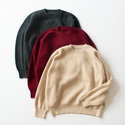
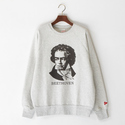

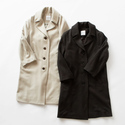

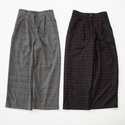
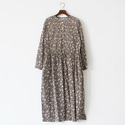


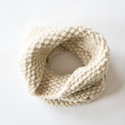
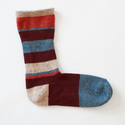
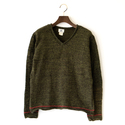

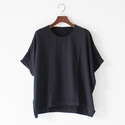
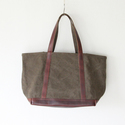

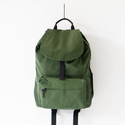
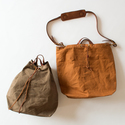

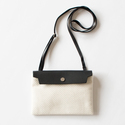
.jpg)
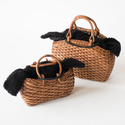
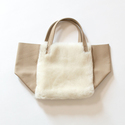
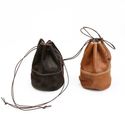
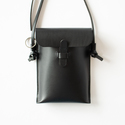

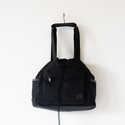
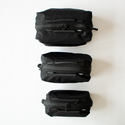
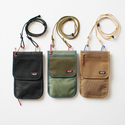
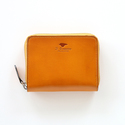
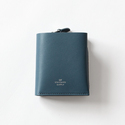
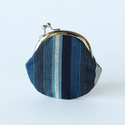
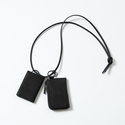
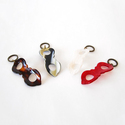
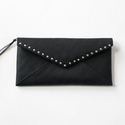
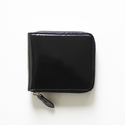


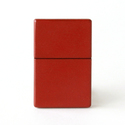
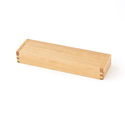
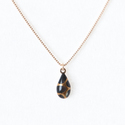

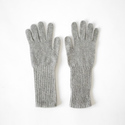


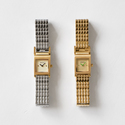

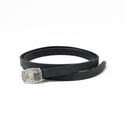
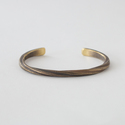
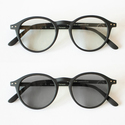
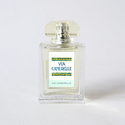

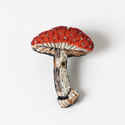
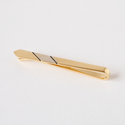



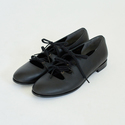
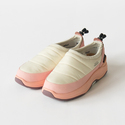
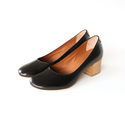


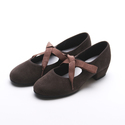
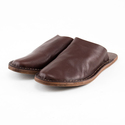
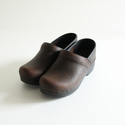

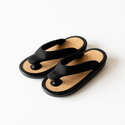
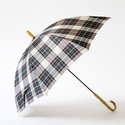
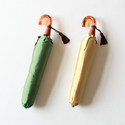
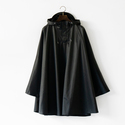
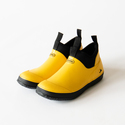
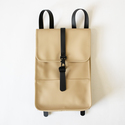
.jpg)

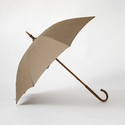
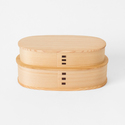
.jpg)
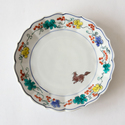
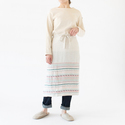
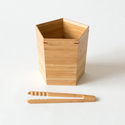
.jpg)

